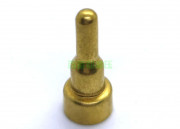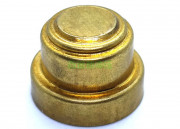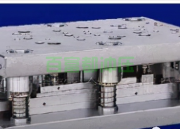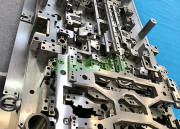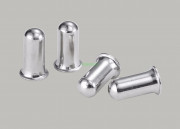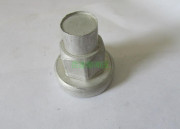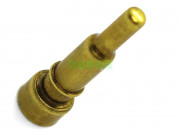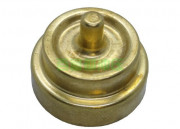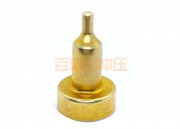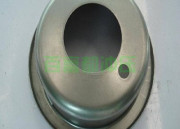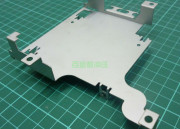What is the cause of delayed cracking in the processing of stainless steel drawing parts?
1. Delayed cracking of austenitic stainless steel. (such as 200 series, represented by 304, 300 series, etc.)
The delayed cracking of austenitic stainless steel is mainly determined by its own structure, and the degree of work hardening of austenitic stainless steel is relatively large. After stretching, in addition to the residual internal stress generated by cold working, the austenite structure also undergoes martensitic transformation at the mouth. To prevent cracking of the mouth, it is necessary to eliminate residual stress and martensitic structure, so that it can undergo phase transformation at high temperature. Austenitic stainless steel takes 304 as an example, and the annealing temperature is 1010-1050 degrees Celsius. Generally, in order to avoid the overall annealing deformation of the stretched part, only the mouth of the stretched part is annealed, and the relatively fast one is high-frequency annealing.
2. Delayed cracking of ferritic stainless steel. (For example, 400 series stainless steel represented by 430, commonly known as stainless steel)
Ferritic stainless steel does not change after stretching, and product cracking is mainly caused by residual stress. In order to ensure safety, from experience, for cylindrical deep-drawn parts, when the aspect ratio is greater than or equal to 0.8 and the diameter is greater than or equal to 300, annealing treatment is required. Of course, if cracking occurs when the aspect ratio is less than 0.8, annealing should be arranged immediately.
When using stainless steel or ferritic stainless steel materials, the use of stamping and drawing oil can reduce the breakage rate of the product and reduce the cost. The lubrication state of stamping is a mixed state of fluid lubrication and boundary lubrication. If only mineral oil is used, the strength of the oil film will not meet the requirements, and the oil film will be easily broken, which will cause metal-to-metal contact to produce sintering. The use of oily agents can make up for this deficiency. One end of the oily agent molecule contains polar groups such as carboxyl group, hydroxyl group and ester group. These polar groups can chemically or physically adsorb oily agents and form a solid lubricating film on the metal surface, thereby improving lubricating performance.
However, when the friction surface temperature rises to a certain temperature, the molecular arrangement of the oily agent adsorption film will be destroyed and the lubricating effect will be lost. At this time, the boundary lubricating film covering the surfaces of the two metals disappears, resulting in direct contact between the metals. As the direct contact area increases, the frictional energy also increases, resulting in an increase in temperature and a tendency to occur so-called sintering. In this case, the additive used to prevent direct contact between the two metal surfaces is an extreme pressure agent, even at elevated temperatures. Extreme pressure agent (EP) is a kind of boundary lubricating film that uses the high temperature generated on the friction surface to chemically change itself, generate shear force on the friction metal surface, and play an effective protective role.
Stretching of stainless steel hardware, equipment, molds and stretching oil are key factors. Otherwise, no matter how good the personnel and technology are, it is difficult for a clever woman to cook without rice, and cannot make high-quality products.
Metalworking Manufacturing Statistics: The design life of drawing equipment is about 10 years, which is caused by factors such as the equipment itself, overuse and improper maintenance. In the process of metal drawing, improper selection of drawing oil will lead to accelerated wear and tear of many equipment, and some will be paralyzed in a few years, which directly affects the operation of the whole plant and cannot maximize benefits.
Read More →





